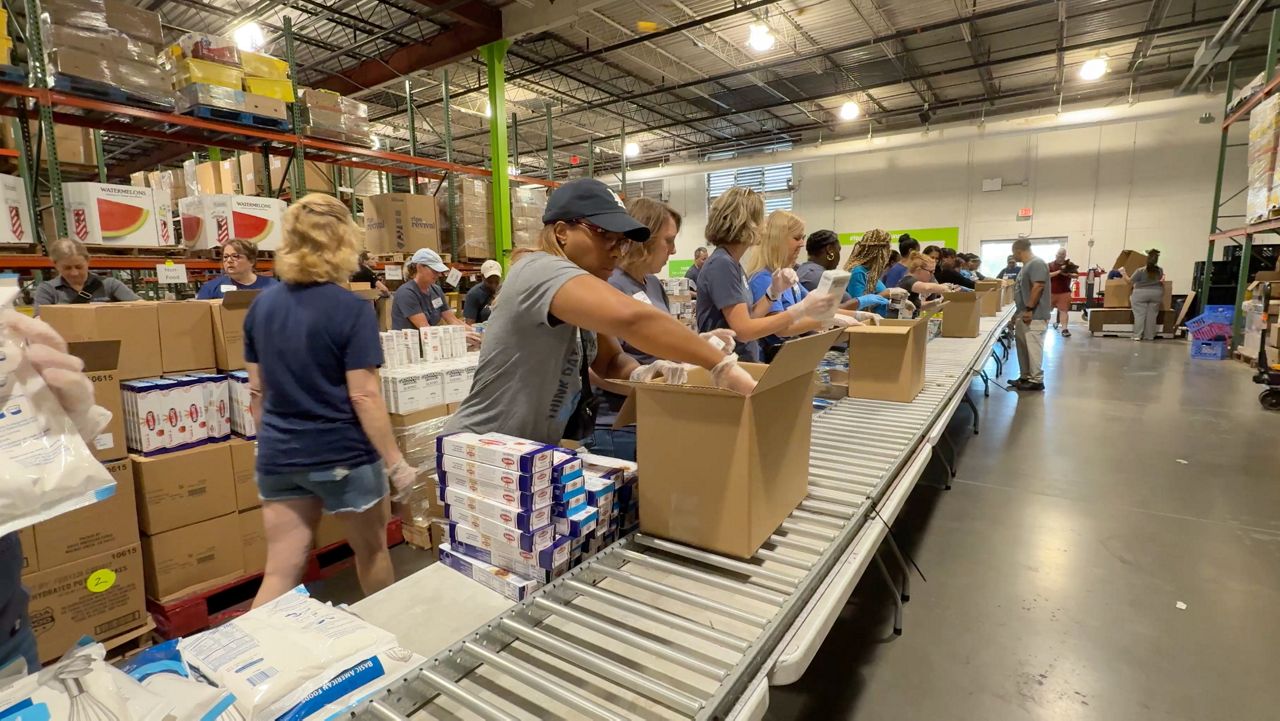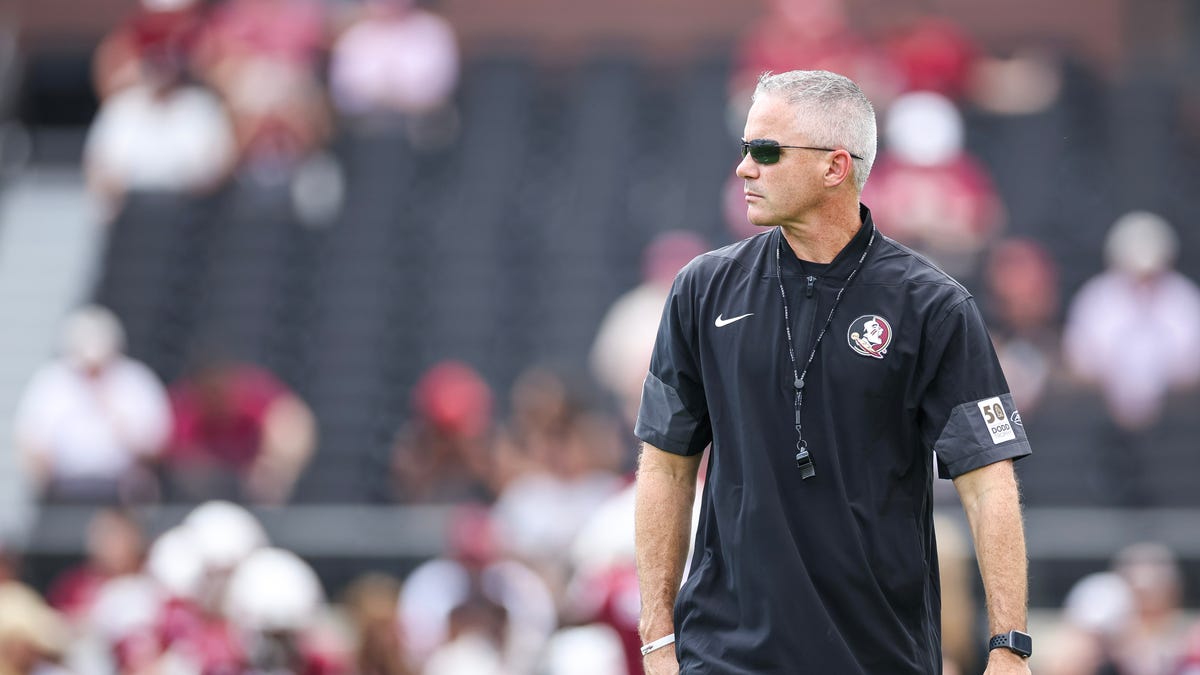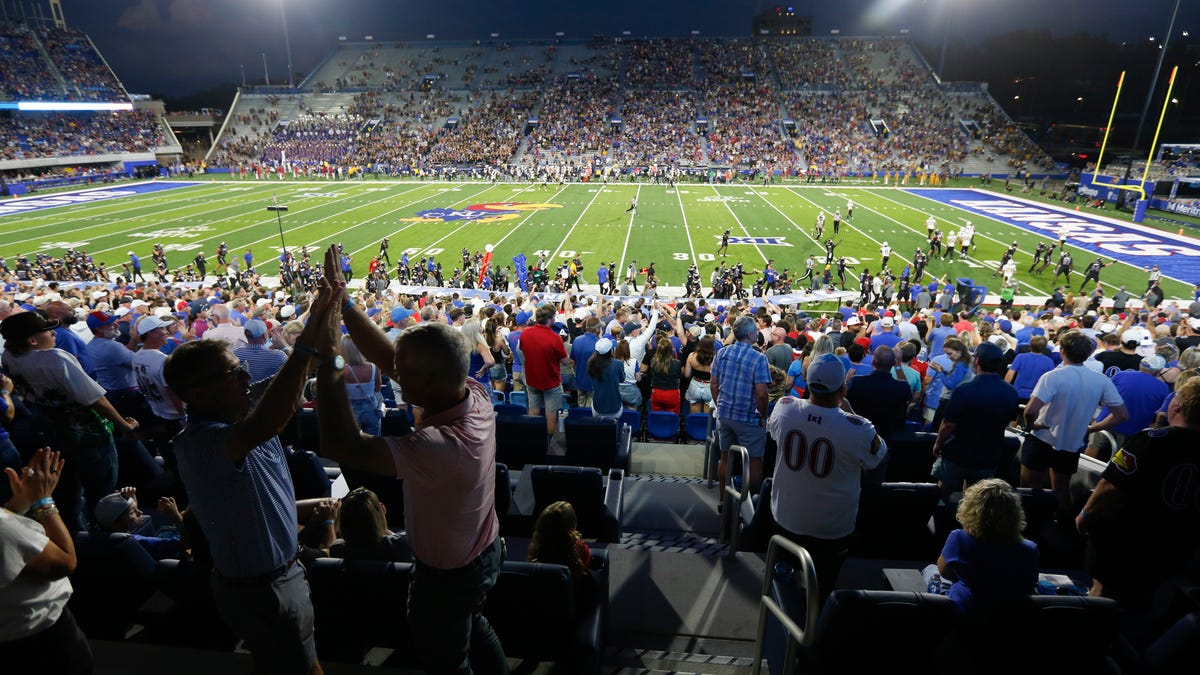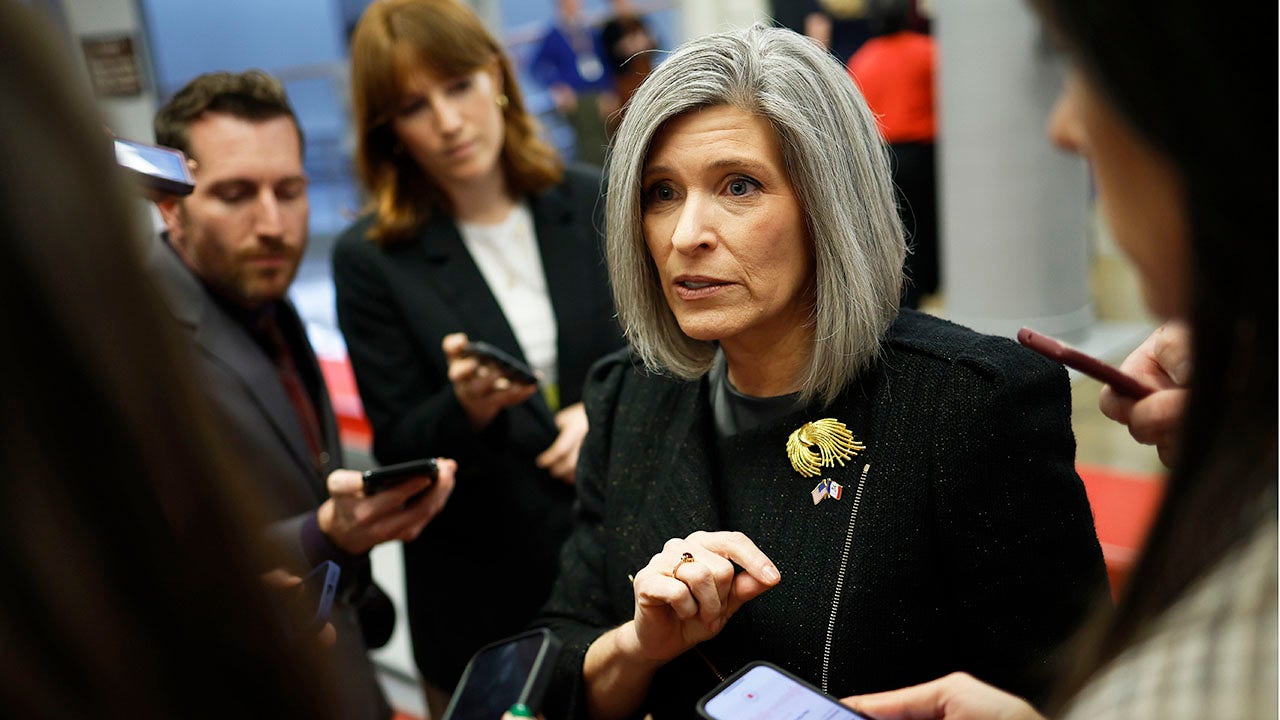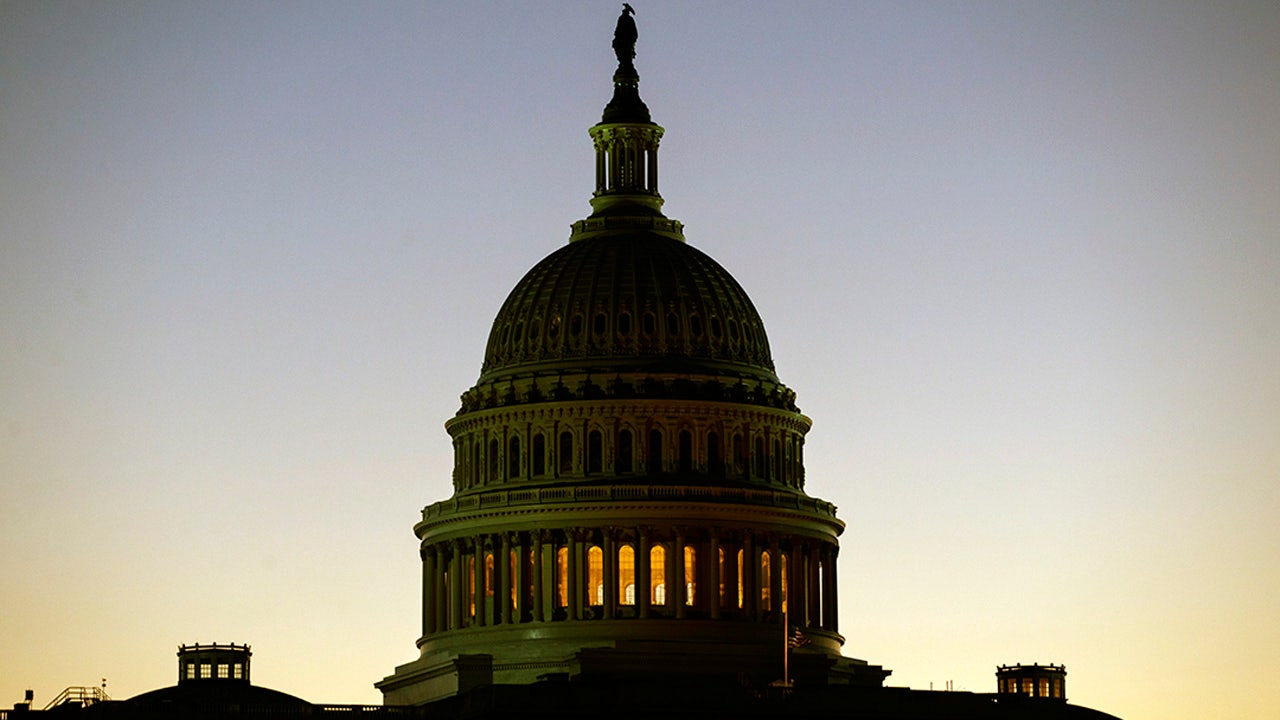Vermont
Small farmers hit by extreme weather could get assistance from proposed insurance program
MIDDLESEX, Vt. — Since catastrophic flooding hit Vermont in July and waterlogged crops, some farmers are trying to figure out how to get through the next season.
Water washed away seeds planted in the summer at Bear Roots Farm, which grows about 20 acres (8 hectares) of mostly root vegetables at a high altitude. Farmers and co-owners Jon Wagner and Karin Bellemare are now asking themselves whether they want to take out a loan to plant all those seeds again — especially since it’s currently raining in January in Vermont.
They estimate the extreme rainfall caused them a 50% financial loss of about $180,000. The pair support legislation introduced last month by Vermont U.S. Sen. Peter Welch, a member of the Senate Agriculture Committee, and Sen. Bernie Sanders, as well as senators from Massachusetts. The bill aims to create an insurance program for small produce farms facing losses from increasingly extreme weather in the Northeast and other parts of the country.
“In Vermont we had frost in May that hurt a lot of our farmers, particularly orchards, and then of course we had the devastating floods in July. And those floods really wiped out crops,” Welch said at a press conference Friday at Roots Farm Market.
The flooding affected nearly 28,000 acres of farmland in Vermont, causing over $16 million in losses and damage, Welch’s office said. That came after the May frost that caused $10 million in losses, particularly to apple and grape growers.
“Unfortunately, with all the various insurance programs that are there to back up our farmers we really don’t have an insurance program that will help our small vegetable farmers,” Welch said.
The current crop insurance program is inadequate because farmers have to identify how much of a crop was a particular vegetable and potentially only get the wholesale value but farms like Bear Roots Farm sell their produce retail, he said.
The legislation, called the Withstanding Extreme Agricultural Threats by Harvesting Economic Resilience or WEATHER act, directs the U.S. Department of Agriculture to research the possibility of developing an index-based insurance program in which payouts would be based on agricultural income, according to Welch’s office.
More: Deja vu: Vermont gets flooded one week before Christmas
Grace Oedel, executive director of the Northeast Organic Farming Association of Vermont, said the group has been working with hundreds of farmers who have had devastating losses but could not recoup them with the existing programs.
“So there’s been a patchwork effort to help people make it through the season,” she said.
Wagner said that to operate, they had taken out loans with a high interest rate — and when the extreme rains hit, they didn’t have a way to pay them back. They were able to acquire some funding locally and from other sources that didn’t completely bridge the gap but was enough to get them to the current moment, he said. Usually they sell their storage crops through June and July of the following year but now there’s not much left, he said.
A fundraising campaign launched earlier this month by some business and government leaders with hopes to raise $20 million for affected farmers while the need is higher at nearly $45 million, according to the Vermont Agency of Agriculture Food & Markets.
“There’s nobody who’s unaffected, whether you’re a perennial grape or apple grower, a dairy farmer trying to cut forage when it’s raining every other day all summer, or a vegetable farmer that might have been under four feet of water,” said Justin Rich, president of the Vermont Vegetable and Berry Growers Association, and a produce farmer in Huntington. “So it was just kind of whiplash for a lot of growers.

Vermont
Vermont murder suspect arrested in New York
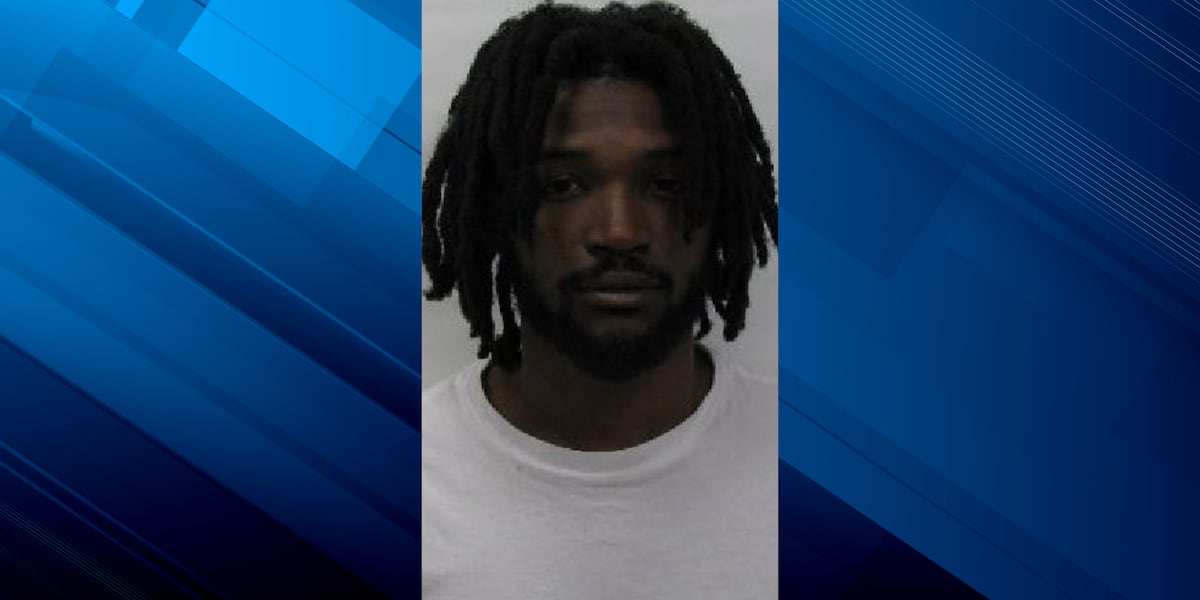
PORTLAND, N.Y. (WCAX) – Police say the suspect in a Vermont murder was arrested in New York on Wednesday.
Terrence Biggs Jr., 25, of Michigan, was wanted in the deadly shooting of Austin Rodriguez, 26, of Rutland. It happened at a home on Summer Street on April 22.
Investigators say state police in New York arrested Biggs during a traffic stop in Portland, New York, that is in western New York, early Wednesday morning.
Biggs is charged with second-degree murder.
We still don’t know what authorities think led to the shooting or what the connection was between the two men.
Copyright 2025 WCAX. All rights reserved.
Vermont
Vermont shelter celebrates 68 adoptions in one month

Vermont
A covered bridge quest in Vermont – VTDigger


This story by Tim Calabro was first published in The Herald on Sept. 11, 2025.
Phill Gatenby rolled over the Moxley Bridge in Chelsea with a plastic skeleton riding shotgun in his Jeep, having made the long drive from Brattleboro for an early morning visit. Just a year ago, the Manchester, England native — by way of Florida — had never laid eyes on a covered bridge. Now he’s smitten.
Gatenby recalled seeing a covered bridge while driving around and thinking, “Oh, that’s interesting. I’d never seen a covered bridge in my life before. Never really heard of them,” he said. “A couple days later, I was going to Townshend, and all of a sudden it’s the Dummerston Bridge, and I’m just like, different size, different shape, different color.”
He stopped for directions and as he got lost on the back roads, he saw more and more covered bridges.
What started as casual curiosity has evolved into a quest: visit and film all 100 of Vermont’s authentic, historic covered bridges and share the journey on YouTube in a series titled “Vermont’s 100 Covered Bridges.”
So far he’s been to 50 and cranked out 37 videos of his visits — one every Sunday.
The most recent set of episodes has focused on the covered bridges of Tunbridge, Chelsea, and Randolph.
No two are quite alike. From king and queen trusses to parallelogram-shaped spans built on bends, like some on the First Branch, Gatenby has come to appreciate their variety and character.
And, stepping back from the bridges, the entire scene fascinates Gatenby.
“I mentioned this in the Kingsbury Bridge [episode]. I was at the bridge and I looked, and you’ve got the green mountains in the background and rolling hills. Then you’ve got the farm with the — is it the corn towers? — the river and a covered bridge. And it just says, like, you can’t get more Vermont!”
Gatenby’s process is rigorous. Each episode takes hours to shoot and edit. He gets different angles — sometimes driving through a bridge three or four times for the right shot. He’s waded into rivers, climbed steep banks, and once filmed inside a long-retired bridge that had been turned into a town shed.
“I try and do something that’s consistent,” he says. “So it’s, you know, the same start, the same middle. I go in the river. I’ve been in every single river so far.”
Gatenby credits community access TV stations — first Okemo Valley TV in Ludlow and now Brattleboro Community TV — for helping him build his skills and loaning him equipment.
“They literally brilliantly sat down and five, six, seven weeks went through how you do it,” he recalled.
Gatenby’s episodes go out via Okemo Valley TV’s YouTube channel and have regular times on the Okemo Valley and Brattleboro TV stations.
Form, Function, History
Vermont once had more than 600 covered bridges, Gatenby noted, but flooding and age have winnowed down the number greatly. Now, 100 remain and many towns hold clusters of them.
Tunbridge, for example, boasts five (Flint, Larkin, Mill, Cilley and Howe), with the Moxley bridge just over the Chelsea line. Randolph has three (Kingsbury, Gifford, and Braley or Johnson), all of them along the Second Branch.
Gatenby pointed out that three of the First Branch bridges were built by the same person, Arthur Adams. That’s a phenomenon common to covered bridges, Gatenby noted. Oftentimes the same person who had the skills to build a bridge would become the area’s go-to expert.
As Gatenby visits each of the 100 covered bridges spread throughout the state, he points out the history and construction techniques used in each, particularly the suspension methods unique to covered bridges. Most covered bridges in the White River Valley make use of modified king trusses, posts fitted into a triangle, which provide strength to the structure. Some, like the Moxley bridge, use both king trusses and square queen trusses around them.
Vermont’s covered bridges aren’t just structural relics, though — they’re cultural icons.
Some have graced the silver screen, including the Kingsbury Bridge in Randolph, used by Alfred Hitchcock as scenery in his 1955 film “The Trouble with Harry.”
“North by Northwest” has its dramatic crop duster strafing Cary Grant, Gatenby jokes in one of his episodes before cutting to a humble, scenic shot featuring the South Randolph bridge. “Unfortunately, it wasn’t quite as glamorous as that!”
The Chiselville bridge in Sunderland — Gatenby’s favorite so far — featured in “Baby Boom,” Diane Keaton’s 1987 film, and a year later, in the 1988 Chevy Chase and Madolyun Smith Osborne comedy, the Upper Falls bridge in Weathersfield made for a memorable gag (“I wouldn’t go that way if I were you”).
Another memorable stop is East Corinth, where the prop bridge used in “Beetlejuice” was fabricated out of whole cloth for the two weeks of filming. “Thousands of people go there every year,” he said, noting that the set-piece, used now as a shed at a ski area, doesn’t count among the authentic and historic bridges he films.
Nor, he said, does the Quechee Bridge. Though it is often mistaken for a traditional covered bridge, it’s just a facade.
“It’s concrete and steel. There’s very little wood,” Gatenby said. “You see the wood on the outside and the roof.”
Traditional bridges are completely made from wood and use a variety of truss systems to strengthen the span.
Place and Purpose
Gatenby moved to Vermont from Florida in July of last year. He now lives in Brattleboro with his wife and works as a shift supervisor at a home for adults with mental health issues.
“I’m a trained youth worker in England,” he said, having spent years working for the Prince’s Trust, a charity founded by King Charles. His day job might be demanding, but the early hours leave room for exploration.
“Three o’clock to 11:30 at night, so the daytime allows me to spend time in the TV studio,” he says. That flexibility has enabled him to squeeze in long road trips, sometimes filming six or seven bridges in a single day. “I’ve got to do minimum six, seven bridges each trip now,” he added. “To make it worth it.”
This Sunday, the show’s 38th episode will be released.
“I’m doing a little special 50th episode,” he said, noting the halfway point in the 100-bridge journey. “That’s where I’m bringing in stuff like the Quechee bridge. Because people said, ‘Oh, you didn’t go to the Quechee.’”
As the series nears its midpoint, Gatenby’s audience is slowly growing, both online and in the communities he visits.
“It’s just amazing … you know, and I’m just visiting them all,” he said, “places that I wouldn’t have got to see otherwise.”
With 50 more bridges to go, Vermont’s covered bridge guy still has miles to travel and stories to uncover.Gatenby’s series of covered bridge videos can be watched on Okemo Valley and Brattleboro public television stations or found on YouTube.

